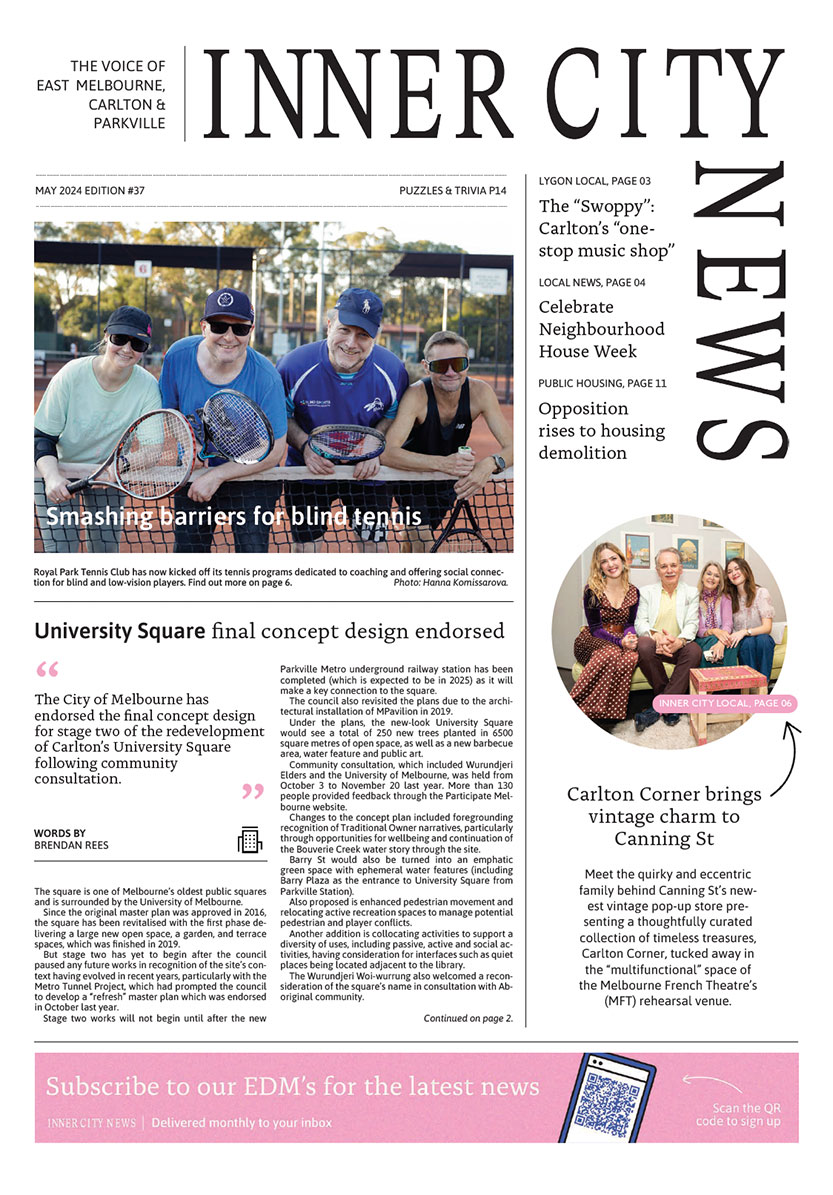Cycling track at Exhibition Building
In the late 19th and early 20th centuries, cycle racing was one of the most popular sports in Melbourne.
It was so popular that in 1891 the trustees of the Exhibition Building in Carlton decided to build a cycle racing track next to their building on the north side, where the Museum now stands.
In the years that followed, the track was the venue for races that attracted thousands of Melburnians to watch local and international stars race. It was a popular attraction for more than half a century.
In 1898 a race organised by the Australian Natives Association on what was then known as Foundation Day (later called Australia Day) is reported to have attracted in excess of 70,000 spectators, making it one of the most highly attended bicycle race events in the history of Australian cycling. There was standing room only in most parts of the grounds, and the grandstands were bursting.
The crowd witnessed a 46-race program which began at midday and ran into the evening. It carried prize money of £220 for the winner of the main event, the ANA Wheel Race, the highest for any race in the world at the time.
Besides the ANA Wheel Race, the exhibition outdoor track also saw the running of the best-known and longest-standing cycle race in Australia, the Austral Wheel Race, in the 1900s and 1920s.
Over the years the track was upgraded and refurbished several times. Arc lights were added in 1905, making it Australia’s premier cycling track, with international champions regularly competing there. By the 1920s, however, public interest in cycle racing had dropped off somewhat, and the track was used for the racing of low-powered motorcycles as well as bicycles.
Interest was revived a little in 1936 when an entrepreneur leased the track from the trustees of the Exhibition Building and constructed a board track. This was a banked track designed for a different style of racing that emphasised tactics and speed.
However, the board track was objected to by local residents and others on the basis that it restricted public access, prevented the area from being used by other sports and was an eyesore. In 1939 they won a court case that forced the board track to be removed.
During World War Two, the Exhibition Building was taken over by the Royal Australian Air Force. By the time the Air Force moved out in 1946, the track was completely unusable, and the area was used instead for the construction of huts for a Migrant Reception Centre. •

Carlton Corner brings vintage charm to Canning St




 Download the Latest Edition
Download the Latest Edition